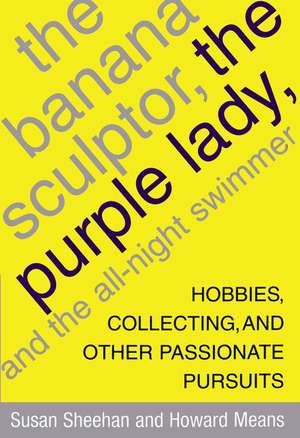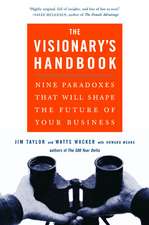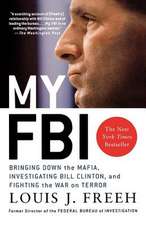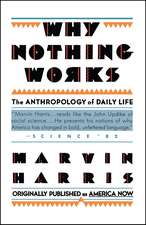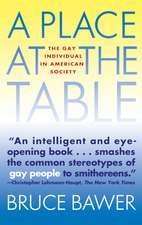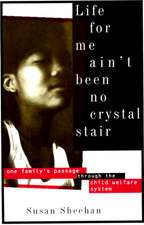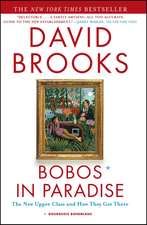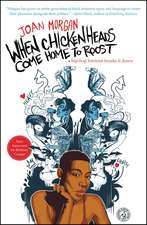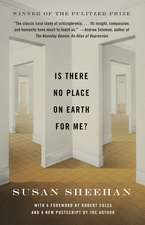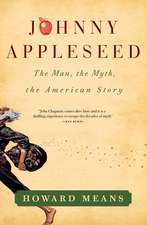The Banana Sculptor, the Purple Lady, and the All-Night Swimmer: Hobbies, Collecting, and Other Passionate Pursuits
Autor Susan Sheehan, Howard Meansen Limba Engleză Paperback – 23 aug 2007
The Banana Sculptor, the Purple Lady, and the All-Night Swimmer chronicles the amazing variety of ways in which we relax, compete with others and ourselves, and indulge some of our richest fantasies. Here are wonderfully warm and witty accounts of Americans as they: attempt to swim all the Great Lakes, often in horrible conditions; quit a job and begin raising sheep to accommodate a newfound passion for spinning; eat at every McDonald's in the nation; carve The Last Supper from wood; cross all the world's suspension bridges; build huge banana sculptures; roller blade, scull, and bake; and collect marbles, Noah's arks, talking birds, and much more.
In these pages you'll meet a marvelous array of ordinary people who do unusual things, sometimes to extremes, as they define for themselves worlds of imagination, contest, and excellence. These are people who thrill to the chase and sometimes plain wear themselves out having fun, whether it's flying kites as big as a king-size mattress, canoeing in the Canadian wilderness, or meticulously recording the daily details of their everyday existence.
In Working, Studs Terkel gave us an unforgettable oral history of the working life of an earlier generation. The Banana Sculptor, the Purple Lady, and the All-Night Swimmer is a history for our own times -- of the passionate pursuits by which so many of us define ourselves and of the universal search for happiness and a sense of fulfillment.
Maybe you'll find yourself in the forty people profiled here. Maybe you'll find a hobby that you'll want to make your own. Either way, your life is likely to be enriched, just as the lives of the people you will read about are enriched by the depth of their commitment and the beauty of their accomplishments.
Preț: 120.87 lei
Nou
Puncte Express: 181
Preț estimativ în valută:
23.13€ • 24.21$ • 19.14£
23.13€ • 24.21$ • 19.14£
Carte disponibilă
Livrare economică 15-29 martie
Preluare comenzi: 021 569.72.76
Specificații
ISBN-13: 9781416575207
ISBN-10: 1416575200
Pagini: 304
Dimensiuni: 140 x 216 x 20 mm
Greutate: 0.33 kg
Ediția:07000
Editura: Simon&Schuster
Colecția Simon & Schuster
ISBN-10: 1416575200
Pagini: 304
Dimensiuni: 140 x 216 x 20 mm
Greutate: 0.33 kg
Ediția:07000
Editura: Simon&Schuster
Colecția Simon & Schuster
Notă biografică
Susan Sheehan is the author of seven books, including the Pulitzer Prize-winning Is There No Place on Earth for Me? She has been a staff writer for The New Yorker since 1961 and has written for The New York Times and Architectural Digest, where she is a contributing writer. She lives in Washington, D.C.
Cuprins
Contents
Preface
Part 1 Artful Expressions
Part 2 Thrill of the Chase
Part 3 Going to Extremes
Part 4 Pleasures Small and Large
Part 5 Motion Pictures
Part 6 Callings
Part 7 The Sporting Life
Part 8 Passionate Pursuits
Acknowledgments
Preface
Part 1 Artful Expressions
- Doug Fishbone: Lots of Bananas
- James Pettus: Essential Natures
- Robin Tarbell-Thomas: To the Fair
- Ann and Sam Ritter: To Fly
- Leonard Lauder: The Beauty of Small Things
Part 2 Thrill of the Chase
- Alexandra Stafford: Food of Life
- David Hanschen: On the Road Again
- Barry Popik: First Words
- Cathy Henderson: Buried Treasures
- Henry Sakaida: The Go-Between
Part 3 Going to Extremes
- Gig Gwin: Wordly Riches
- Jim Dreyer: Far Shores
- Peter Holden: Macs Without End
- Marietta Phillips: Bossing Around
- Roger Swicegood: Song of Myself
Part 4 Pleasures Small and Large
- Cathy Runyan: Got Her Marbles
- Peggy Dickson: Bird Brains
- Harry Kloman: Matters of Fact and Fiction
- Judy Konnerth: Two by Two
- Steve Spreckelmeier: All Steamed Up
- Patricia Corrigan: "Thar She Blows!"
Part 5 Motion Pictures
- Lisa Ball: Snow Job
- Steve Everett: Blade Runner
- Mike Gaines: Hot into the Corner
- Jim Murphy: Call of the Wild
Part 6 Callings
- Jerry Traufler: Masterwork
- Walter Pforzheimer: I, Spy
- Claire Miller: Family Ties
- Ted Furey: For God and Man and Old Ireland
- Rose Kramer: Spinning Yarns
Part 7 The Sporting Life
- Tom Blake: Tiger! Tiger! Burning Bright
- Robert Strupp: Good Deals
- Kim Eisler: Odds-on Favorite
- Larry Kahn: Tiddly Wonks
- Matt Dodyk: Holing Out
Part 8 Passionate Pursuits
- John Sylvester Jr.: The Things We Die for
- Sonia Young: Color Me Purple
- Claudia Perry: Love of the Game
- Daniel Chapin: Route Man
- Don Betty: Crossover Artist
Acknowledgments
Extras
Chapter One: Doug Fishbone: Lots of Bananas
As a youngster in Queens, New York, Doug Fishbone assumed he would grow up to be a doctor "because that was in the rhythm of the household and my father was a surgeon." One night, back when M*A*S*H was a hit television show, he was awakened by a bad dream: "I was performing surgery and I killed the patient." After he graduated from Amherst, where he was a music major, his substitute-career thought was to be "a wheeler-dealer business type." He spent some time in Israel selling a stretch fabric made of acetate and spandex, called Slinky. "I'm an easy-going guy, not a real grab-'em-by-the-lapel salesman, so I operated at a net loss," Fishbone, age thirty-two, says.
Fishbone returned to New York, got a job "in the financial field," and took some art classes. First he worked with clay, then with bronze. "I loved art and I hated my job, so I quit the financial gig and decided to devote myself to becoming an artist." As part of his preparation, he took a job at a bronze foundry in Long Island City. "Most of the guys I worked with were Ecuadorians. I used to go to salsa clubs with them to drink and dance. After ten months of learning how to weld and chase metal, I figured I wasn't going to learn much more. It was time to move on."
He was taken with the idea of going to Ecuador, heard about an art residency program in Cuenca, a city considered one of the nicest in the country, submitted a pack of photographs of his clay and bronze sculptures, and was invited to come. He arrived in March 1998. "You can live like a prince in Cuenca for fifty dollars a month. I was able to work almost full-time on my art instead of wearing a tie and scrounging to make a buck."
Fishbone went to a blacksmith's studio through the art program and worked on a piece of conceptual sculpture, completing a bosque, or forest, consisting of fifteen narrow forged-iron poles with tops in a curved horn shape -- a design taken from traditional blacksmith window grilles. One day in the spring of 1999, he was walking along a road near El Arenal, an open-air market. He saw vendors sitting next to vast quantities of bananas, which they sold by the bucketful to passersby who bought them to feed their pigs. "I like to be inspired by what I see, and what I saw were bananas," Fishbone says. "Lots and lots of bananas."
At a party, Fishbone had met a man who worked for the Banco Central. "I convinced the bank's director of cultural programs to let me put a mountain of bananas outside the bank. Then I had to find a supplier of bananas who could come up with a large quantity of bananas at short notice. I asked around and found a fellow named Miguel Mejia, with whom I made a deal for two hundred fifty cases of bananas -- that's about twenty-five thousand bananas -- for about one dollar per case. Many purchasers ship or store bananas and buy them unripened, but I had to have bananas that would be a rich golden yellow on the day of the installation in August 1999. The wrong color would have derailed the whole conceptual angle of the piece.
I needed gold-colored bananas as the basis for the financial metaphor, which is crucial to the interpretation of the work. The bananas represent the wealth of the country and its environmental resources. Because they are not durable, even the banking system is based on a commodity at risk of rotting."
Everything went smoothly. His distributor showed up with a truckload of bananas, and Fishbone spent the day piling them up by hand, on top of a metal armature he borrowed from the blacksmith from whom he was taking informal classes. "Miguel came by later in the day with some of his daughters to help me, which was unexpected and very nice of him. A while after the show, I took his entire family out to dinner, and we ate a huge banquet of cuy, which is roasted guinea pig.
"The plaza of the Banco Central is a beautiful outdoor space framed by a number of dark buildings, and the image of the bananas worked perfectly there. Everything was set up on a Friday and left under a tarp overnight for the Saturday morning exhibition. It was covered like a Christo because I didn't want the bananas exposed to the sun. I could rest easy, since the bananas were watched over by several guards with submachine guns who normally guard the Banco Central at night, it being a federal institution.
"On Saturday the show was attended by several hundred people. The bank hired a rock group and gave out free ice cream and beer to lure younger and older people to the show, in case the promise of free bananas was not appealing enough. I think the director of the bank was fairly worried about the political tone of the piece, since in Ecuador it is a very touchy issue, and runs the risk of being misinterpreted when a work like this is staged by a gringo artist. The director of the bank had initially told me, only half jokingly, that he might lose his job if people assumed I was arrogantly pointing my finger and saying 'Look at this banana republic.' So the event was turned into a rather fantastic spectacle centered around my bananas, as opposed to the more austere conceptual work I had originally envisioned.
"It went very well. Within an hour and a half of my invitation to the audience to eat the bananas, not a single piece of fruit remained. The whole sculpture had been devoured or hauled off. People came from everywhere, carrying boxes and sacks, loaded up, went off, and returned for more. I saw a number of women in traditional dress come from the market to acquire bananas to resell in the market. I like the metaphor of eating the piece. The frenzy of it all was really remarkable, and lent a kind of absurd theatricality that took me by surprise, and added to the conceptual impact. And the piece was constantly changing shape as people carried bananas away with abandon. Not just poor people but rich people. The local Rolex dealer walked off with a bag of bananas in one hand, a Louis Vuitton bag in the other. As the pickings got slimmer people figured they would take whatever was useful. I had used some cardboard crates to give the piece more heft and people lifted those, too. This was mildly irritating, since I had to pay Miguel for them. Even the high-quality plastic tarp I bought and laid on the ground to keep the bank plaza from getting too dirty vanished. Thankfully, I didn't have to clean up a single thing, so after the show I thanked a few people at the bank, made sure my friend retrieved his steel armature, and walked home."
Fishbone returned to New York in September 1999. He taught art to kids after classes in a public school in Brooklyn and worked as a temp for an investment banking firm. He had made connections in Guayaquil, Ecuador, before leaving Cuenca. In April 2000 he flew to Guayaquil to do another banana sculpture. He went by bus to Cuenca to speak with Miguel Mejia and with the blacksmith. "It might have been cheaper to use a distributor in Guayaquil, since the cities are four or five hours apart by bus, but I felt lucky to have a banana distributor I knew and trusted. All I had to do was tell Miguel the quantity I needed -- forty thousand bananas this time. And the color: golden yellow on May fourth. And the location: this time the banana sculpture was inside the gallery of a woman with a great reputation for staging alternative projects by young artists.
"At six A.M. on May third Miguel arrived with the four hundred cases of bananas -- Cavendish bananas, which I was told are the most popular in Central and South America because of their size. It was a rough day, as Guayaquil is swelteringly hot. I hired a few guys to help unload the truck and to carry the cases up two flights of stairs to the gallery space, but I must have lost a few pounds from all the lugging and piling. A hell of a job.
"As in Cuenca, the piece was installed by hand, piling up the bananas on top of the steel structure. Miguel helped me all day, an enormous advantage. The setup was fairly straightforward and we finished about six P.M. the night before the show. Ultimately the form of the piece owed more to chance than I had hoped, since one of the sides of the pile of bananas collapsed, starting a mini-avalanche just as I was ready to go home for the night.
"As a result of the heat, the bananas below, which were under the most strain, started to soften and in some cases liquify. I was worried that one dicey part in front was going to avalanche downwards, since there was a frightening overhang of bananas that seemed itching to fall out of the pile.
"This brings up an interesting point. Though I try in some ways to sculpt the pile of bananas, ultimately I have no control because it will collapse here or there, altering the shape I am trying to construct. That's one problem when you're working with an impermanent material. Thankfully it held its form pretty well, and the show went on without crisis.
"It was well attended. Because the show was in an indoor setting, the crowd was just a little smaller than the one in Cuenca and was largely comprised of art students from universities in Guayaquil. I had rented and set up lights and they brought out the color of the bananas with a very expressive richness. An unforeseen element that added greatly to the show was the intense smell of bananas. The aroma, which wafted all the way out to the street, and the absurd beauty of an enormous pile of fruit in the middle of the gallery made for an unusual art-going experience.
"My conception of the piece is that in addition to its intellectual content, it must be first and foremost an interesting piece to experience visually. With the additional impact of the smell, and of course the free food, I am hopeful people felt they got good value out of the show. Even if they hated it, they got free food, which is more than you can say for most exhibitions.
"The show lasted about three hours. Toward the end we began inviting kids off the street to come in and take the bananas. In a country as poor as Ecuador it would be obscene to use so much food and then waste it, and I was worried that since we were using a gallery and not an easily visible public space, we would not be able to give away all the bananas. However, a lot of people came in off the street and left loaded with food.
"It was a bit uncomfortable to see beggars in the gallery mingling with gallery goers drinking rum supplied by a beautiful young woman in a red dress sent by the rum company which sponsors the gallery's openings, but it added to the impact of the piece as an indictment of global forces that conspire to impoverish vast numbers of people -- these very people, to a large degree. I went back to my hotel more exhausted than I had ever been. Oddly enough, throughout the whole setup and staging of the piece, I ate only two bananas. I had a rum or two.
"The next day we arranged for the cleanup. There was still a good deal of food left over. We continued to invite people in and arranged the leftovers in crates and bags to be left on the street. Guayaquil is a very poor city. I was pleased that I was able to give away all the fruit -- ripe fruit, of excellent quality -- and that for at least a day or two there were fewer hungry kids in the neighborhood. Ecuador is going through an enormous economic crisis and there is no money for cultural projects. So I footed the entire bill, including all my personal expenses, hence the need for my daytime clerk job in New York. After a week's vacation, I flew home and went back to work."
In November 2000 Fishbone took time off and flew to Costa Rica to do another banana installation, and in May 2001 he did the "banana piece" in Poland. Both times, all his expenses were paid and he was glad: "For me to spend two thousand dollars is a lot of working in an office."
His banana installations have received some publicity and he hopes that if he does the banana piece in a few other places around the world he will have built up a reputation as a conceptual artist who can deliver a basically abstract and hard-to-put-together project. "It's forced me to become very resourceful," he says. "I'm like a commando. You can drop me anywhere in the world and I'll get the job done. I just need cheap or free bananas."
Fishbone has conjured up other projects he would like to try, closer to home. He would like to spend a week from 9:00 A.M. to 5:00 P.M. in a Plexiglas tank in the middle of Grand Central Terminal, reading. "I'd be at leisure while all around the train depot people would be scurrying around. I'd like to try to make the point that people in New York City live in a manic way." He also likes the idea of filling up a Manhattan art gallery with a large quantity of soil imported from Cuba. "You can't do anything simpler than dumping dirt on a floor," he says. "People would be standing around drinking wine on this 'foreign soil' that for so many Americans has become supercharged."
Fishbone is currently attending Goldsmiths College at the University of London, where he expects to receive an M.A. in Fine Art in September 2002. With an art degree he will be able to teach art "unless I hit the big time before that and become the next Jeff Koons or Christo. This may not be the most likely of things to happen, but one has to dream."
Copyright © 2002 by Susan Sheehan and Howard Means
As a youngster in Queens, New York, Doug Fishbone assumed he would grow up to be a doctor "because that was in the rhythm of the household and my father was a surgeon." One night, back when M*A*S*H was a hit television show, he was awakened by a bad dream: "I was performing surgery and I killed the patient." After he graduated from Amherst, where he was a music major, his substitute-career thought was to be "a wheeler-dealer business type." He spent some time in Israel selling a stretch fabric made of acetate and spandex, called Slinky. "I'm an easy-going guy, not a real grab-'em-by-the-lapel salesman, so I operated at a net loss," Fishbone, age thirty-two, says.
Fishbone returned to New York, got a job "in the financial field," and took some art classes. First he worked with clay, then with bronze. "I loved art and I hated my job, so I quit the financial gig and decided to devote myself to becoming an artist." As part of his preparation, he took a job at a bronze foundry in Long Island City. "Most of the guys I worked with were Ecuadorians. I used to go to salsa clubs with them to drink and dance. After ten months of learning how to weld and chase metal, I figured I wasn't going to learn much more. It was time to move on."
He was taken with the idea of going to Ecuador, heard about an art residency program in Cuenca, a city considered one of the nicest in the country, submitted a pack of photographs of his clay and bronze sculptures, and was invited to come. He arrived in March 1998. "You can live like a prince in Cuenca for fifty dollars a month. I was able to work almost full-time on my art instead of wearing a tie and scrounging to make a buck."
Fishbone went to a blacksmith's studio through the art program and worked on a piece of conceptual sculpture, completing a bosque, or forest, consisting of fifteen narrow forged-iron poles with tops in a curved horn shape -- a design taken from traditional blacksmith window grilles. One day in the spring of 1999, he was walking along a road near El Arenal, an open-air market. He saw vendors sitting next to vast quantities of bananas, which they sold by the bucketful to passersby who bought them to feed their pigs. "I like to be inspired by what I see, and what I saw were bananas," Fishbone says. "Lots and lots of bananas."
At a party, Fishbone had met a man who worked for the Banco Central. "I convinced the bank's director of cultural programs to let me put a mountain of bananas outside the bank. Then I had to find a supplier of bananas who could come up with a large quantity of bananas at short notice. I asked around and found a fellow named Miguel Mejia, with whom I made a deal for two hundred fifty cases of bananas -- that's about twenty-five thousand bananas -- for about one dollar per case. Many purchasers ship or store bananas and buy them unripened, but I had to have bananas that would be a rich golden yellow on the day of the installation in August 1999. The wrong color would have derailed the whole conceptual angle of the piece.
I needed gold-colored bananas as the basis for the financial metaphor, which is crucial to the interpretation of the work. The bananas represent the wealth of the country and its environmental resources. Because they are not durable, even the banking system is based on a commodity at risk of rotting."
Everything went smoothly. His distributor showed up with a truckload of bananas, and Fishbone spent the day piling them up by hand, on top of a metal armature he borrowed from the blacksmith from whom he was taking informal classes. "Miguel came by later in the day with some of his daughters to help me, which was unexpected and very nice of him. A while after the show, I took his entire family out to dinner, and we ate a huge banquet of cuy, which is roasted guinea pig.
"The plaza of the Banco Central is a beautiful outdoor space framed by a number of dark buildings, and the image of the bananas worked perfectly there. Everything was set up on a Friday and left under a tarp overnight for the Saturday morning exhibition. It was covered like a Christo because I didn't want the bananas exposed to the sun. I could rest easy, since the bananas were watched over by several guards with submachine guns who normally guard the Banco Central at night, it being a federal institution.
"On Saturday the show was attended by several hundred people. The bank hired a rock group and gave out free ice cream and beer to lure younger and older people to the show, in case the promise of free bananas was not appealing enough. I think the director of the bank was fairly worried about the political tone of the piece, since in Ecuador it is a very touchy issue, and runs the risk of being misinterpreted when a work like this is staged by a gringo artist. The director of the bank had initially told me, only half jokingly, that he might lose his job if people assumed I was arrogantly pointing my finger and saying 'Look at this banana republic.' So the event was turned into a rather fantastic spectacle centered around my bananas, as opposed to the more austere conceptual work I had originally envisioned.
"It went very well. Within an hour and a half of my invitation to the audience to eat the bananas, not a single piece of fruit remained. The whole sculpture had been devoured or hauled off. People came from everywhere, carrying boxes and sacks, loaded up, went off, and returned for more. I saw a number of women in traditional dress come from the market to acquire bananas to resell in the market. I like the metaphor of eating the piece. The frenzy of it all was really remarkable, and lent a kind of absurd theatricality that took me by surprise, and added to the conceptual impact. And the piece was constantly changing shape as people carried bananas away with abandon. Not just poor people but rich people. The local Rolex dealer walked off with a bag of bananas in one hand, a Louis Vuitton bag in the other. As the pickings got slimmer people figured they would take whatever was useful. I had used some cardboard crates to give the piece more heft and people lifted those, too. This was mildly irritating, since I had to pay Miguel for them. Even the high-quality plastic tarp I bought and laid on the ground to keep the bank plaza from getting too dirty vanished. Thankfully, I didn't have to clean up a single thing, so after the show I thanked a few people at the bank, made sure my friend retrieved his steel armature, and walked home."
Fishbone returned to New York in September 1999. He taught art to kids after classes in a public school in Brooklyn and worked as a temp for an investment banking firm. He had made connections in Guayaquil, Ecuador, before leaving Cuenca. In April 2000 he flew to Guayaquil to do another banana sculpture. He went by bus to Cuenca to speak with Miguel Mejia and with the blacksmith. "It might have been cheaper to use a distributor in Guayaquil, since the cities are four or five hours apart by bus, but I felt lucky to have a banana distributor I knew and trusted. All I had to do was tell Miguel the quantity I needed -- forty thousand bananas this time. And the color: golden yellow on May fourth. And the location: this time the banana sculpture was inside the gallery of a woman with a great reputation for staging alternative projects by young artists.
"At six A.M. on May third Miguel arrived with the four hundred cases of bananas -- Cavendish bananas, which I was told are the most popular in Central and South America because of their size. It was a rough day, as Guayaquil is swelteringly hot. I hired a few guys to help unload the truck and to carry the cases up two flights of stairs to the gallery space, but I must have lost a few pounds from all the lugging and piling. A hell of a job.
"As in Cuenca, the piece was installed by hand, piling up the bananas on top of the steel structure. Miguel helped me all day, an enormous advantage. The setup was fairly straightforward and we finished about six P.M. the night before the show. Ultimately the form of the piece owed more to chance than I had hoped, since one of the sides of the pile of bananas collapsed, starting a mini-avalanche just as I was ready to go home for the night.
"As a result of the heat, the bananas below, which were under the most strain, started to soften and in some cases liquify. I was worried that one dicey part in front was going to avalanche downwards, since there was a frightening overhang of bananas that seemed itching to fall out of the pile.
"This brings up an interesting point. Though I try in some ways to sculpt the pile of bananas, ultimately I have no control because it will collapse here or there, altering the shape I am trying to construct. That's one problem when you're working with an impermanent material. Thankfully it held its form pretty well, and the show went on without crisis.
"It was well attended. Because the show was in an indoor setting, the crowd was just a little smaller than the one in Cuenca and was largely comprised of art students from universities in Guayaquil. I had rented and set up lights and they brought out the color of the bananas with a very expressive richness. An unforeseen element that added greatly to the show was the intense smell of bananas. The aroma, which wafted all the way out to the street, and the absurd beauty of an enormous pile of fruit in the middle of the gallery made for an unusual art-going experience.
"My conception of the piece is that in addition to its intellectual content, it must be first and foremost an interesting piece to experience visually. With the additional impact of the smell, and of course the free food, I am hopeful people felt they got good value out of the show. Even if they hated it, they got free food, which is more than you can say for most exhibitions.
"The show lasted about three hours. Toward the end we began inviting kids off the street to come in and take the bananas. In a country as poor as Ecuador it would be obscene to use so much food and then waste it, and I was worried that since we were using a gallery and not an easily visible public space, we would not be able to give away all the bananas. However, a lot of people came in off the street and left loaded with food.
"It was a bit uncomfortable to see beggars in the gallery mingling with gallery goers drinking rum supplied by a beautiful young woman in a red dress sent by the rum company which sponsors the gallery's openings, but it added to the impact of the piece as an indictment of global forces that conspire to impoverish vast numbers of people -- these very people, to a large degree. I went back to my hotel more exhausted than I had ever been. Oddly enough, throughout the whole setup and staging of the piece, I ate only two bananas. I had a rum or two.
"The next day we arranged for the cleanup. There was still a good deal of food left over. We continued to invite people in and arranged the leftovers in crates and bags to be left on the street. Guayaquil is a very poor city. I was pleased that I was able to give away all the fruit -- ripe fruit, of excellent quality -- and that for at least a day or two there were fewer hungry kids in the neighborhood. Ecuador is going through an enormous economic crisis and there is no money for cultural projects. So I footed the entire bill, including all my personal expenses, hence the need for my daytime clerk job in New York. After a week's vacation, I flew home and went back to work."
In November 2000 Fishbone took time off and flew to Costa Rica to do another banana installation, and in May 2001 he did the "banana piece" in Poland. Both times, all his expenses were paid and he was glad: "For me to spend two thousand dollars is a lot of working in an office."
His banana installations have received some publicity and he hopes that if he does the banana piece in a few other places around the world he will have built up a reputation as a conceptual artist who can deliver a basically abstract and hard-to-put-together project. "It's forced me to become very resourceful," he says. "I'm like a commando. You can drop me anywhere in the world and I'll get the job done. I just need cheap or free bananas."
Fishbone has conjured up other projects he would like to try, closer to home. He would like to spend a week from 9:00 A.M. to 5:00 P.M. in a Plexiglas tank in the middle of Grand Central Terminal, reading. "I'd be at leisure while all around the train depot people would be scurrying around. I'd like to try to make the point that people in New York City live in a manic way." He also likes the idea of filling up a Manhattan art gallery with a large quantity of soil imported from Cuba. "You can't do anything simpler than dumping dirt on a floor," he says. "People would be standing around drinking wine on this 'foreign soil' that for so many Americans has become supercharged."
Fishbone is currently attending Goldsmiths College at the University of London, where he expects to receive an M.A. in Fine Art in September 2002. With an art degree he will be able to teach art "unless I hit the big time before that and become the next Jeff Koons or Christo. This may not be the most likely of things to happen, but one has to dream."
Copyright © 2002 by Susan Sheehan and Howard Means
